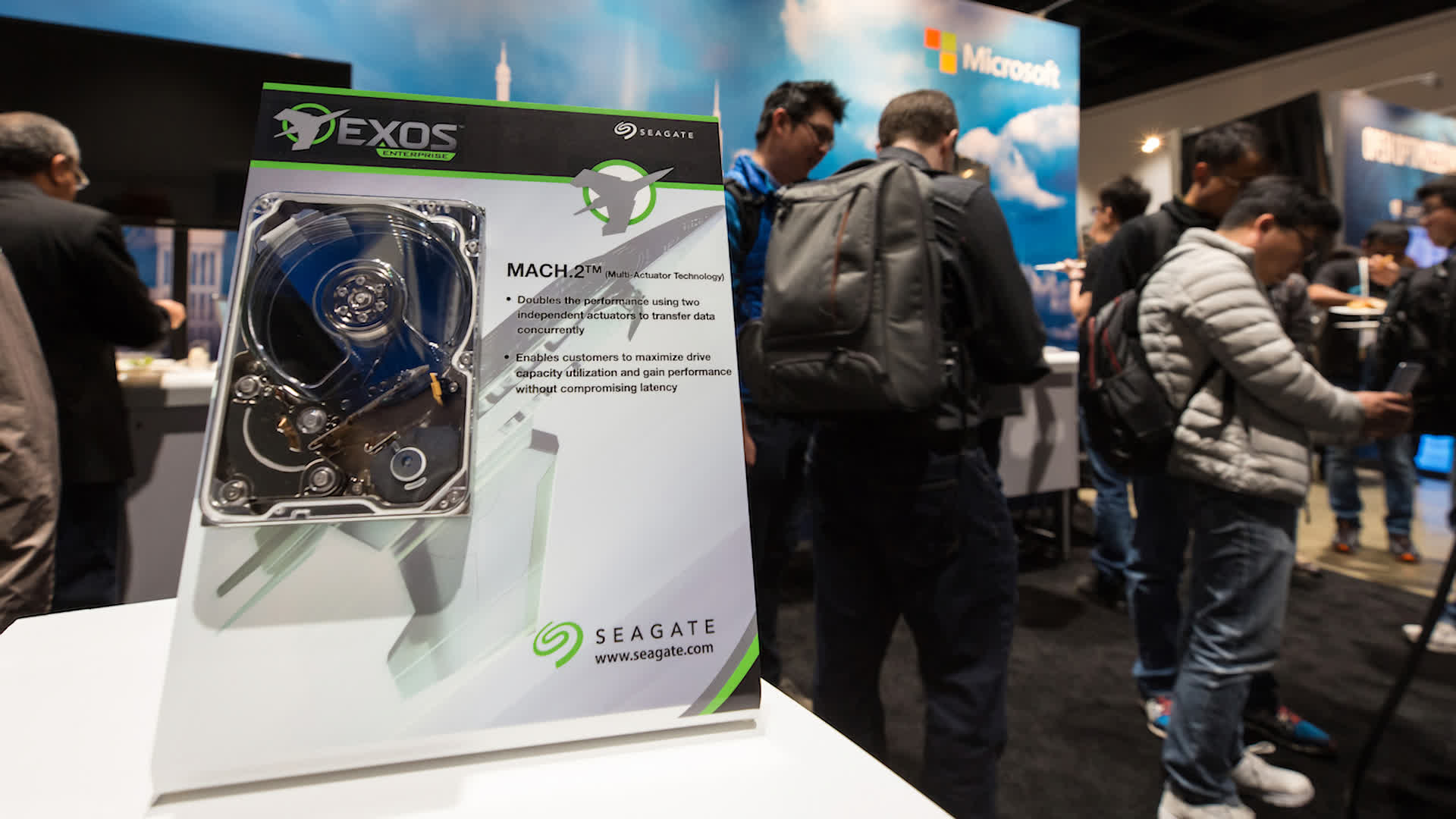Bottom line: Seagate has finally shared more information about its Mach.2-based Exos 2X14 hard drives, which feature multi-actuator technology to significantly boost performance. By using two actuators with read / write heads attached, equipped hard drives can achieve double the IOPS performance.

As we previously learned, Seagate developed its Mach.2 technology to maximize performance across large-capacity enterprise HDD products.
Mach.2 drives also allow for 2x the performance of sequential bandwidth for streaming applications. What’s more, it’s the first HDD tech to introduce parallelism, enabling two independent streams of data (or, dual channel access).
In Seagate’s newly published data sheet, the company notes that its 14TB Helium- sealed drive spins at 7200 RPM and affords a maximum sustained transfer rate of 524 MB/s with an average latency of 4.16ms. Power consumption is rated at 7.2w average at idle and up to 13.5w under load.
The drive carries a 2.5 million-hour MTBF rating and is backed by Seagate’s five-year limited warranty.
During a February analyst meeting, Jeff Fochtman, SVP of marketing, said they started shipping Mach.2 drives in volume in 2019 and have over a dozen major customers using them. That said, Mach.2 remains in what Fochtman called a “technology-staging mode.”
Once capacities climb above 30 terabytes, however, we should start seeing the tech become a standard feature in many large data centers.
https://www.techspot.com/news/89781-seagate-shares-data-sheet-hard-drives-based-mach2.html
